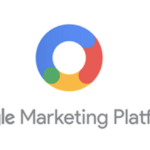We live in the era of personalised marketing. Targeting the right audience at the right time can determine the difference between a successful campaign and a dud. Personalised marketing is seen all over the web, from tailored emails to retargeting. But how can you personalise adverts that display to thousands of people?
Out of home advertising
Out of home (OOH) consists of media used for marketing outside of the home, often via billboards in airports, at bus stops, in shopping malls, and on public transport. High footfall areas increase brand recognition and target a consistent live audience.
As with every branch of marketing, out of home has largely become digital (enter ‘digital out of home’, or DOOH). This allows for a more immersive experience, and a more targeted ad that is likelier to increase brand recognition and convert the audience. But how?
Keeping fast-paced advertising relevant
Digital out of home advertising means ads can adapt to a myriad of variables in order to stay connected to a specific audience or segments of audiences. These variables range from target demographics like age, location and gender, as well as the time of day, pollen count, and unforeseen current affairs. The latter is made possible with recent tech advances giving marketers real-time flexibility.
Due to the fast-paced nature of digital advertising, marketers now have complete control that doesn’t stop once the ad is live. Changes can be made throughout the campaign to keep the campaign relevant, either routinely, or by making live, in-campaign alterations. For example:
Weather
If it’s cold weather outside, a drinks brand can change their ad to promote specifically their hot drinks range. Smoothies and iced coffees can be advertised on hotter days.
Time of day
Time could routinely trigger ad changes – fast food chains advertise their breakfast menu in the morning and their main menu throughout the rest of the day, thus promoting the most relevant products to the public at all times.
Humidity
Changing campaign copy to be sympathetic to those facing humid weather (or any weather that may be affecting the public) will be more appealing to a wide audience. Staying relevant is absolutely key in our fast-paced world.
Split testing in digital out of home advertising
Split testing, or A/B testing, involves creating two ads to market the same product or service and changing elements of each ad, to understand which performs better, and why.
Variables in each ad may include copy, design, time, location, and more. The more A/B tests you do, the more you measure and get to know each segment of your target audience, and the more successful your ad campaigns should be.
Why is DOOH so important for future success?
Now marketing departments are more data-rich, they understand their audiences, and are now able to develop strategic, accurately targeted campaigns for maximum ROI. The advances made in technology allowing marketers to change variables such as time, location and weather, further increases the relevance and efficiency of the ad, giving it a higher chance of success.
The flexibility marketers are given with personalised and targeted advertising is increasing, as is the consumer’s demand for total connectivity, both online and out of home. Utilising DOOH marketing is likely to boost your ROI and provide you with valuable insights into customer behaviour. It’s time to get on board!




